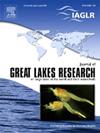安大略湖自然和改良开放海岸的鱼类群落指标比较
IF 2.4
3区 环境科学与生态学
Q3 ENVIRONMENTAL SCIENCES
引用次数: 0
摘要
在开阔的海岸环境中使用各种海岸线硬化结构来减少风和波浪作用造成的侵蚀并保护基础设施。随着对自然海岸线的修改越来越多地应用,确定对当地鱼类群落负面影响最小的硬化技术非常重要。我们比较了加拿大安大略湖7种开放海岸岸线类型的5种鱼类群落指标(渔获量、物种丰富度、生物完整性指数(IBI)和生产力指数(HPI)以及非远洋鱼类的存在)。基于岸线类型、环境因素和邻近特征,采用集成嵌套拉普拉斯近似方法对各鱼类群落指标进行空间自相关分析,确定了最适合的广义线性模型。人工护坡(突出于湖中的护甲石屏障)和混合海岸线(多种海岸线类型)往往具有与自然海岸线(沙质、混合和砾石海滩)相似的鱼类群落指标,并且比护坡(倾斜的护甲石海岸线)具有更高的度量值。渔获量随采样时水温的升高而下降。靠近可以提供庇护所的区域(如港口)的采样点具有较高的物种丰富度和IBI分数,并且更有可能包含非远洋鱼类。这表明,虽然一些人工海岸线类型的鱼类群落指标与更自然的开放海岸地区相似,因此可能更可取,但在规划和评估像劳伦森五大湖这样的大型水体的海岸线硬化时,当地的环境条件和可以提供躲避风和波浪作用的特征的邻近性是关键考虑因素。本文章由计算机程序翻译,如有差异,请以英文原文为准。
Comparison of fish community metrics between natural and modified open coast shorelines in Lake Ontario
Various shoreline hardening structures are used in open coast environments to reduce erosion caused by wind and wave action and protect infrastructure. As modifications to natural shorelines are increasingly applied, it is important to identify hardening techniques that have minimal negative effects on local fish communities. We compared five fish community metrics (catch, species richness, indices of biotic integrity (IBI) and productivity (HPI), and the presence of non-pelagic fishes) among seven open coast shoreline types sampled during the summer in Lake Ontario, Canada. Using an Integrated Nested Laplace Approximation approach to account for spatial autocorrelation, best fit generalized linear models were identified for each fish community metric based on shoreline types, environmental factors, and proximity features. Artificial groynes (armourstone barriers protruding into the lake) and mixed shorelines (multiple shoreline types) tended to have similar fish community metrics to natural shorelines (sand, mixed, and gravel beaches) and higher metric values than revetments (sloped armourstone shorelines). Catch declined with increasing water temperature at the time of sampling. Sampling sites in close proximity to areas that could provide shelter (e.g., harbours) had higher species richness, IBI scores, and were more likely to contain non-pelagic fishes. This suggests that while some artificial shoreline types have similar fish community metrics to more natural open coast areas and may thus be preferable, local environmental conditions and the proximity of features that can provide shelter from wind and wave action are critical considerations when planning and evaluating shoreline hardening in large waterbodies like the Laurentian Great Lakes.
求助全文
通过发布文献求助,成功后即可免费获取论文全文。
去求助
来源期刊

Journal of Great Lakes Research
生物-海洋与淡水生物学
CiteScore
5.10
自引率
13.60%
发文量
178
审稿时长
6 months
期刊介绍:
Published six times per year, the Journal of Great Lakes Research is multidisciplinary in its coverage, publishing manuscripts on a wide range of theoretical and applied topics in the natural science fields of biology, chemistry, physics, geology, as well as social sciences of the large lakes of the world and their watersheds. Large lakes generally are considered as those lakes which have a mean surface area of >500 km2 (see Herdendorf, C.E. 1982. Large lakes of the world. J. Great Lakes Res. 8:379-412, for examples), although smaller lakes may be considered, especially if they are very deep. We also welcome contributions on saline lakes and research on estuarine waters where the results have application to large lakes.
 求助内容:
求助内容: 应助结果提醒方式:
应助结果提醒方式:


